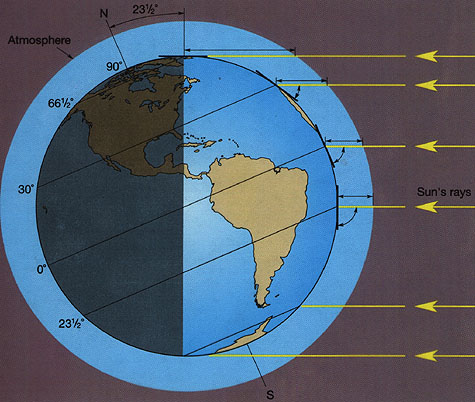Seasons in the Northern Hemisphere - Spring
begins on the Vernal Equinox (20 March)
ends on the Summer Solstice (21 June)
images adopted from The Atmosphere by F.K. Lutgens and E.J. Tarbuck, ©1998 by Prentice-Hall, Inc
 Test your knowledge with this interactive tool that determines the
amount of solar radiation at the top of the atmosphere anytime during
the year and at any latitude
Test your knowledge with this interactive tool that determines the
amount of solar radiation at the top of the atmosphere anytime during
the year and at any latitude
QUESTIONS FOR THOUGHT:
1. Consider two scenarios: (a) The tilt of the Earth decreased to 10°. (b) The tilt of the Earth increased to 40°. How would this change the summer and winter temperatures here at LSC?

2. Where would you expect to experience the smallest variation in temperature from year to year and from month to month? Why?
3. At the top of the earth's atmosphere during the early summer (Northern Hemisphere), above what latitude would you expect to receive the most solar radiation in one day? During the same time of year, where would you expect to receive the most solar radiation at the surface?